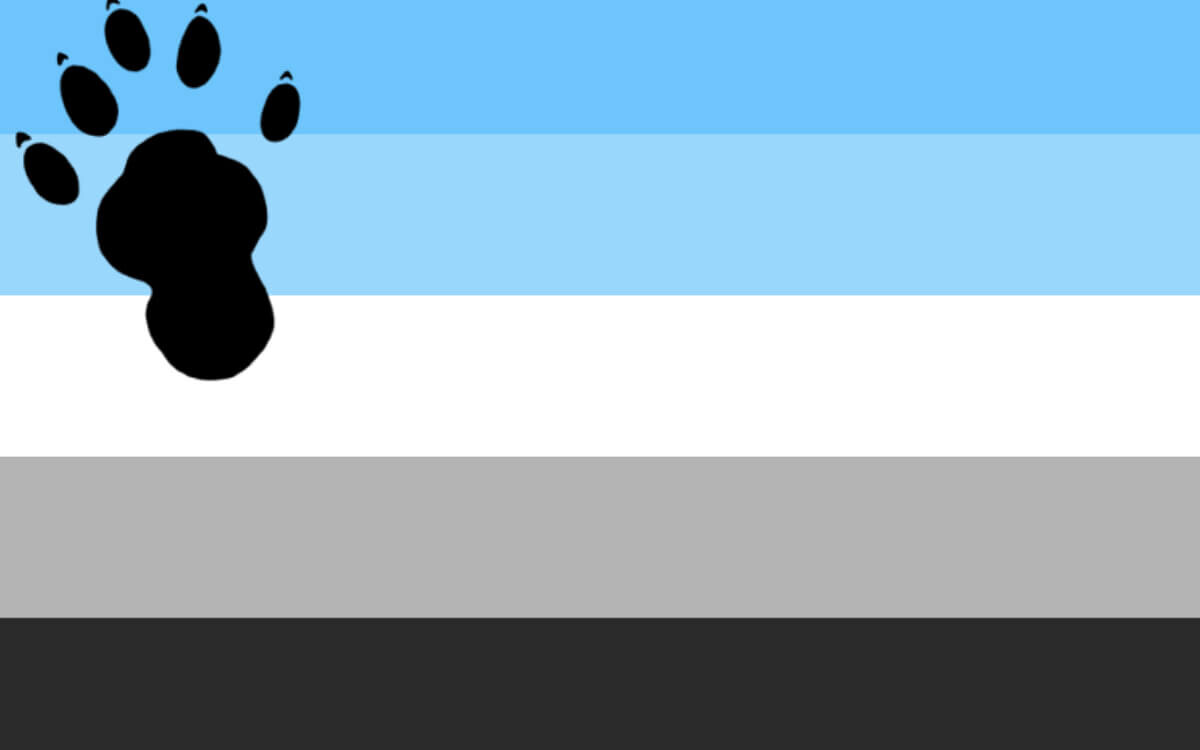An Otter? That’s a mammal from the class of martens, isn’t it? Sure, but the term also plays an important role in the gay scene. The LGBTQ+ community uses the hashtag #Otter to classify men with thicker body hair. These characteristics also apply to B & B’s, but B & B’s are significantly smaller and lighter. Nevertheless, the two classes like to group together. Where you find an otter, a bear is usually not far away.
The otter as a small Bear? Age doesn’t matter!
The Bear is stately, large and very hairy. He often specifically looks for feminine-looking gays, twinks are very popular with bears. Otter look like the miniature version of the Bear, they are also often called “Mini-Bears”. Evil tongues also claim that the otter is the female Bear’s variant (more feminine appearance), though in practice this is nothing more than a cliché. Otters are generally considered to be more tolerant and have no prejudice against more feminine gays.
Please remember that these are stereotypes! What you look like and what character you bring with you cannot be defined by a hashtag.
Where does the otter come from – the history of the classification
In the gay scene, we very often have to deal with prejudices and clichés. For example, people like to claim that all gays are into anal toys, although this is not true! Just as not all otters are keen on twinks and reject Bears! From a purely visual point of view, however, the classifications make quite a bit of sense. If you are on Grindr and looking for a lover, you can specifically look for an (optical) otter in order to find one. But how did the name otter come about? Sure, the animals have fur, but unlike Bears they are amphibious animals and have very little in common with humans.
In fact, there is much to suggest that there is a close connection between otters and bears. The Bear became popular in San Francisco sometime in the 70s. At first, all men with a certain body size and strong hair were declared to be Bärs. With the expansion of the scene, it was then necessary to differentiate more precisely. And so small Bears with less pronounced body features became Otters.
Does the otter have a flag of its own?
To date, no otter flag of its own has been developed. For many gays, the typical paw print of the Bear flag is also a clear otter symbol. On Deviant-Art, a flag has been developed that consists of different blues and greys and also has a black paw print. Although it is not recognised as an “official” otter flag, it is popularly used to represent otters. Perhaps the LGBTQ+ community will eventually develop an exclusive flag for otters, so that this grouping can also carry its pride outside!
What are otter men into?
Is there a blanket answer to this question? No. Otters are flexible in their choice of partners, although they are said to have a certain affinity for twinks. In this way, they resemble the Bears, who are considered to be real twink lovers. In fact, there are also Otters who are submissive personalities looking for a strong Bear as a lover. Ultimately, it is impossible to generalise what a man is looking for. If you are a visual otter, that says nothing about your character and your sexual needs.
Otter story – Mazzei what
The use of animal names to describe different subtypes of homosexual men dates back to author George Mazzei. In 1979, Mazzei published an article called “Who’s Who in the Zoo” in which he described seven different types of homosexual men. Each type was named after an animal that reflected their physical characteristics or personality. Mazzei used these names as a way of describing the diversity of homosexual men and highlighting their differences and similarities.
Although there was no specific mention of “otters” in this article, Mazzei’s description of “Bears” was one of the most influential subtypes he defined.
The use of animal terms to describe different subtypes of homosexual men has evolved and expanded over the years. Today, there are a variety of animal terms used to describe different physical characteristics, personalities or sexual preferences. These terms are often used in the LGBTQ+ community and have developed their own culture and subculture over time.
Am I an otter? When you can assign yourself to this species
You love the Bear community and would like to be one yourself? Then look at yourself in the mirror, because the declaration is almost always made for visual reasons. Are you physically hairy, but have a rather stocky build? Your overall height is well below the average for a male, but you seem somehow bulky? Then you could actually be an otter!
By the way: Did you know that otters don’t necessarily have to be corpulent? Many otters are even athletic or slim and clearly narrower than the Bear!
Welcome to the Bear cage – there’s more than otters!
When it comes to dating, fitting into certain categories plays an increasingly important role. But the otter is not the only abbreviation of Bears! There are many other declarations that make it possible to classify them as accurately as possible. For example, hairy men with a special look and high sexual activity are not bears, but wolves!
Asian bears are called pandas and are typically state, but not hairy! A leather otter is one that has a particular fondness for leather looks. So you can see for yourself how diverse the bear’s world is and how similar some species are. Whether you see yourself as an otter or a bear is ultimately a personal question!
|
